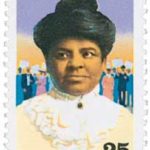Students will examine where people in the U.S. get their news, how news selection amplifies one’s political views, and how media organizations decide to cover stories.
First Amendment: Student Freedom of Speech
The First Amendment’s right to free speech is one of our most important rights as citizens. But what does freedom of speech mean for students in public schools? How do you balance a school’s need for order with a student’s right to free expression? This film explores the evolution of student free speech rights through Supreme Court cases, from Tinker v. Des Moines to Mahanoy Area School District v. B.L., the case of the Snapchatting cheerleader.
IRL 2: The Flag and the Pledge Podcast
Today, we look at Old Glory and the Pledge of Allegiance. Who created them? Why? And how have they changed over the years? Also, we look at four Supreme Court cases that altered what we can and can’t do or say when it comes to the flag and the pledge.
IRL 1: Free Speech in Schools Podcast
We’re digging into four incredibly important Supreme Court cases – four cases that have shaped how we interpret the meaning of free speech in public schools. Is political protest allowed in class? Is lewd speech covered by the First Amendment? Can school administrators determine what students can and can’t say in the school newspaper? Listen in, and find out how students and schools have gone head to head over how First Amendment rights apply in a public school setting.
Freedom of Assembly: The Right to Protest
This lesson will focus on freedom of assembly, as found in the First Amendment. Students will consider the importance of the right to assemble and protest by analyzing cases where First Amendment rights were in question. Using the case National Socialist Party of America v. Village of Skokie, students will consider if the government is ever allowed to control the ability to express ideas in public because viewpoints are controversial, offensive, or painful. Students will use primary sources and Supreme Court cases to consider whether the courts made the correct decision in the National Socialist Party v. Skokie case. Students will be able to form an opinion on the essential question: Is the government ever justified to restrict the freedom to assemble?
Freedom of Assembly: National Socialist Party v. Skokie
This film explores the First Amendment right of the “people peaceably to assemble” through the lens of the U.S. Supreme Court case National Socialist Party of America v. Village of Skokie. The legal fight between neo-Nazis and Holocaust survivors over a planned march in a predominantly Jewish community led to a ruling that said the neo-Nazis could not be banned from marching peacefully because of the content of their message.
Free Speech Essentials
Do your students know what they’re free to say online? At school? On a public street corner? From censorship to cyberbullying, the First Amendment and the freedoms it protects are as hotly contested as ever. This EDCollection explores 16 free speech debates ranging from the founding of our nation to recent headlines to illustrate what free speech actually means, where it comes from, and how far it can go. Whether you’re a social studies teacher looking for a complete unit or an English teacher looking to spend a single class period on free expression, there’s something for everyone. Free registration required.
Deliberation Materials: Hate Speech
Should hate speech be banned in our democracy? This activity includes a deliberation reading and glossary, as well as accompanying handouts to give students additional information on the topic and to guide them through the deliberation process from planning to reflection.
Ida B. Wells and Her Crusade for Racial Justice
Government Speech Under the First Amendment
This lesson teaches students, through a simulation related to government-sponsored Confederate monuments, about the government-speech doctrine under the First Amendment. In particular, this lesson aims to (1) introduce students to the issue of government speech; (2) teach the doctrine; (3) apply the doctrine in a contemporary context; and (4) critically analyze the doctrine.
